The nature of recent Chinese migration to Thailand
New migrants from China refer to the wave of skilled and urban migrants from China who ventured to Asia and elsewhere after the reform era began in the 1980s. Since the 2000s, many have been moving into Southeast Asia. In Thailand, their number has doubled in the last two decades. These migrants are there for business, study and leisure or a combination of these pursuits. In the process, new communities such as Huai Khwang, the "new Chinatown" in Bangkok, have emerged.

Xin yimin (新移民) or new migrants, is a term used in China to refer to people who left China after the reform era began in the 1980s. These migrants are considered products of "new China", better educated, more skilled and more urbanised, and are effectively not the same class of people as the emigrants of the pre-World War II period who were escaping war and hunger. After China's open-door policy began, many of its citizens moved to developing countries in Southeast Asia and other regions in search of business opportunities and economic prosperity.
According to United Nations (UN) data, Chinese emigrants to other parts of the world numbered 5,786,954 in 2000, and numbered twice as many in 2020, at 10,461,000 (Figure 1).

...unlike traditional Chinese migrants which aimed for permanent settlement, new Chinese migrants in Thailand today are transient by nature and do not necessarily wish to settle in Thailand...
Emigrants from China to Southeast Asia numbered 526,422 in 2000; by 2020, they had increased to 688,000. Within this number, Singapore ranks first as the most popular destination where 426,000 Chinese migrants resided in 2020. Thailand came second, hosting 77,000, and Indonesia third with 76,000 (see Figure 2).
Adopting the concept of "transient migration", this paper argues that unlike traditional Chinese migrants which aimed for permanent settlement, new Chinese migrants in Thailand today are transient by nature and do not necessarily wish to settle in Thailand; they are there temporarily, and are often just passing through. This paper provides empirical data and information about these xin yimin (new migrants) in Thailand, and seeks to identify their group differentiation, migration objectives, and their situational appropriation in Thailand. The paper is part of a larger research project which applies qualitative methods based on fieldwork done in 2019, when Chinese residents living in Chiang Mai were interviewed. Information and data were also collected from relevant academic literature, news outlets and other documentation.

Classifying recent Chinese migration to Thailand
The situations under which xin yimin in Thailand live are a reflection of diverse forms of migration based on variety of reasons, often related to business and commerce, leisure and relaxation, tourism or lifestyle change, and international education. In short, these migrants are employees of large and small-scale enterprises, entrepreneurs, governmental staff and experts, international students and their accompanying family members, and short- and long-term stay tourists (Chinese seniors, retirees, political refugees etc.). They usually migrate transnationally to access better living conditions and economic opportunities through business, work, education and lifestyles, which today appear within the context of changing patterns of global capitalism and nation-state development.
Generally, we can categorise the xin yimin into four groups, differentiated by their reasons for migration or by their economic activities in Thailand: 1) migration for business purposes and economic activities; 2) migration for the purpose of acquiring an international education, and those who accompany them; 3) leisure and lifestyle migration; and 4) migration mixing education and leisure with business.
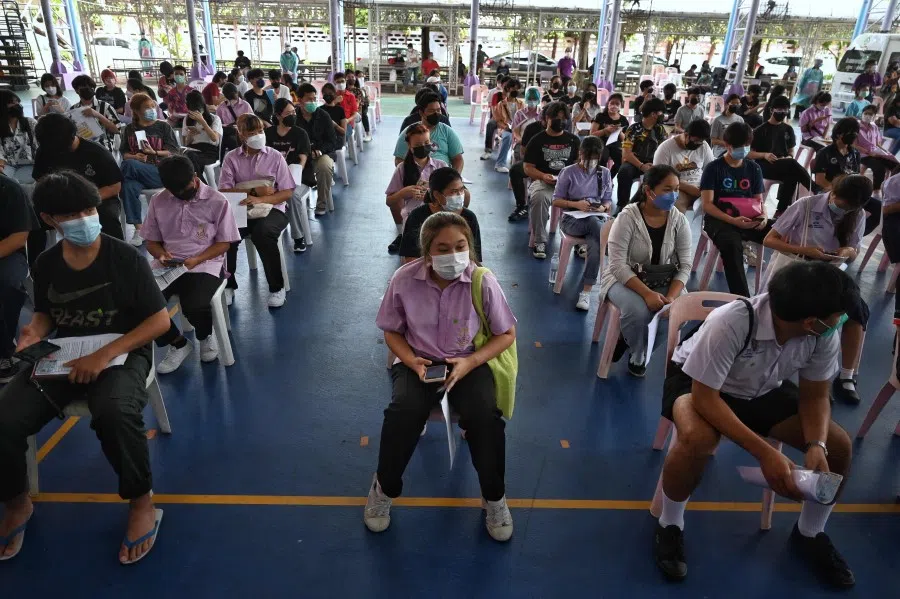
Migration for business and economic activities
This group resides in Thailand for business purposes of various forms, sizes and scales, and comprises individual entrepreneurs with self-employment, brokers, small and medium enterprises (SME), private companies and enterprising entities engaged in commercial, industrial or professional activities. It also includes staff working for official or private institutes, voluntary teachers and freelancers.
The top three foreign groups of investors in Thailand in 2021 are from Japan, Singapore and China... China comes third, with an investment value of US$8,091 million in 19,009 companies, making up 6.68% of total investments
- Chinese investors in Thailand
Chinese investors in Thailand operate two forms of businesses: 1) 100% shareholding company with foreign ownership, and 2) small and medium enterprises (SME) with the shareholding of 51% foreigners and 49% Thai. These are regulated under the Foreign Business Act B.E.2542 (A.D 1999) of Thai National Law.
According to the Department of Business Development (DBD) of Thailand, overall foreign investors operating industries in Thailand in 2021 amount to 101,960 companies, with a total investment value of US$117,777 million, a 4.11% increase since 2020.
The top three foreign groups of investors in Thailand in 2021 are from Japan, Singapore and China. Japan ranks first, with an investment value of US$31,697 million in 10,200 Japanese companies, and accounting for 26.94% of total investments. Singapore ranks second, with US$12,236 million invested in 6,485 companies and accounting for 10.40% of the total investments. China comes third, with an investment value of US$8,091 million in 19,009 companies, making up 6.68% of total investments (Figure 3).
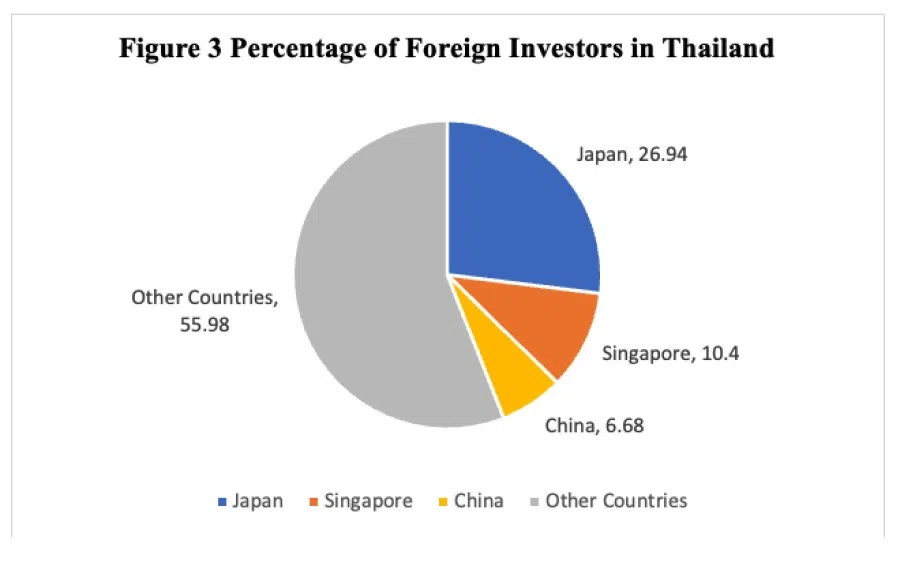
Although Chinese investors operate throughout Thailand, they tend to locate their business in Bangkok; there are 435 such companies in the capital.
Chinese investors in Thailand are concentrated in five industry groups: 1) manufacture of rubber tyres and tubes (13 companies, with investment value at US$588.9 million; 2) manufacture of accessories for motor vehicles (81 companies, with investment value of US$337.2 million; 3) buying-selling of non-residential buildings (1,465 companies, with an investment value of US$334.8 million); 4) commercial banks (two companies, with investment value of US$333.3 million; and 5) inter-industry credit granting (seven companies, with investment value of US$204.4 million) (Figure 4).
Although Chinese investors operate throughout Thailand, they tend to locate their business in Bangkok; there are 435 such companies in the capital. In the eastern region, 115 Chinese companies conduct their business in Chonburi province, through buying and selling own-account non-residential buildings, logistics and transportation, and medical supplies and equipment. In Northern Thailand, Chiang Mai is the most popular location, with 78 Chinese companies doing retail sales via internet, hotels, resort hotels and accommodation, construction of residential buildings, buying and selling of condominiums, residential buildings, and goods wholesaling. To the South, it is Phuket that is the main province, where 33 Chinese companies are registered, mainly doing business in hotels, resorts and accommodation, tourism business, buying and selling condominiums and residences to Chinese customers, wholesaling goods, logistics, and transportation. Besides the industries mentioned above, other industries popular with Chinese investors in Thailand include agriculture, forestry, animal husbandry and fishery, mining, construction and service to household repair, education service, health and social service, culture, sports and entertainment.
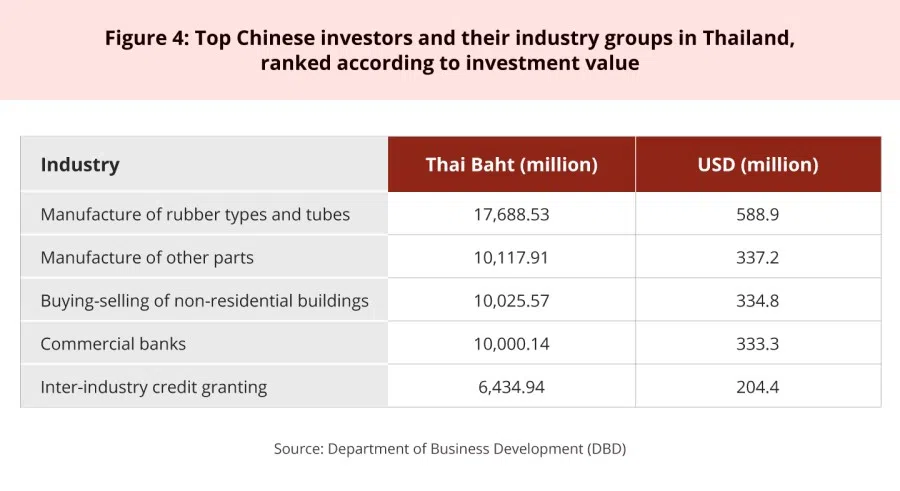
From 2003 to 2018, more than 10,000 Chinese volunteer teachers have been dispatched to over 1,000 Thai schools and universities, making Thailand the world's largest recipient country of Chinese volunteer teachers.
- Staff and Professional Workers
The second group identified as staff and professionals working for official institutes mainly refers to the Confucian Institutes' staff and language instructors (CI), and Chinese teachers working for private schools or Chinese language institutes. Additionally, it includes nomadic employees, professional managers, executive managers, entrepreneurial employees or part-time freelancers who work for Chinese companies. As for CI, the Hanban sent the first batch of volunteer teachers (VCTs) to Thailand in 2003, and the number has soared to 1,506 staff in 2017. Over 2,000 staff were dispatched to Thailand in 2018 which included all CI staff in work ranking: directors, volunteer teachers, government teachers (GCTs), officers and assistants to serve in sixteen Confucian Institutes and twenty-one Confucian classrooms. From 2003 to 2018, more than 10,000 Chinese volunteer teachers have been dispatched to over 1,000 Thai schools and universities, making Thailand the world's largest recipient country of Chinese volunteer teachers.
Education migration
This category refers to Chinese students who seek international education, enrolling in several levels of higher education ranging from kindergarten to secondary education. This includes accompanying guardians popularly called peidu mama (陪读妈妈), or study mothers, as well as other family members.
According to the Ministry of Education of China, over 2.5 million students studied abroad from 2016 to 2019. At the Higher Education (HE) level, the number reached 700,000 in 2019. Thailand in 2020 received 14,418 Chinese students at the HE level, with 10,078 enrolled in private universities and 4,340 in state universities (see Figure 5). The central region, especially Bangkok, is the most popular area for enrolment of Chinese students in HE study programmes, with Chiang Mai in the north coming second.
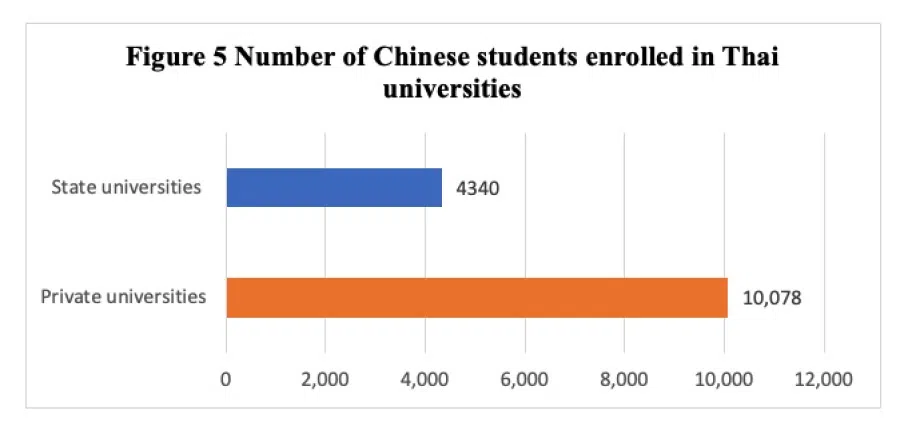
...making China the biggest source of tourists to Thailand, contributing about US$17 billion in revenue.
Apart from Chinese students enrolled at the HE level, Thailand has received Chinese students into international schools from the elementary to the secondary level. According to the International Schools Association of Thailand (ISA), the country currently has at least 128 international schools registered with the ISA and following Western-style English-based education. Most of these schools are located in Bangkok. Chiang Mai has the second largest number of international schools - 21 of these were established recently to serve the high market surge in Chinese children seeking English-based education in Thailand. The number of Chinese students enrolled from kindergarten to high school level at international schools in Chiang Mai is noted in the fact that approximately 1,400, 1,800, and 2,000 students received full-time student visas of the non-immigrant education visa type "ED" in 2017, 2018, and 2019, respectively. In 2019, these students were accompanied by around 1,000 study parents or other caregivers.
Leisure and lifestyle migration
Many lifestyle migrants from China first visited a Thai destination as a tourist. Liking what they experience, they may then decide to migrate there in search of a better lifestyle or a more fulfilling way of life. Thailand is an evident option for this type of lifestyle migration by people from all over the world. In 2019, Thailand received 10.99 million Chinese visitors, which amounts to 27% of all tourists to the country that year, making China the biggest source of tourists to Thailand, contributing about US$17 billion in revenue.

The two main groups of so-called "entrepreneur study parents", and "entrepreneur students" practicing "dai gou" (代购) - purchasing agents who import foreign products via e-commerce to serve Chinese customers in mainland China and Chinese residents who reside elsewhere...
The new trend of long-stay residence consists of especially senior Chinese or retirees. This is a group to note as it has increased in size gradually in recent years. In Chiang Mai, there has been an increase of 117 retired Chinese in 2016 to 563 in 2019. This is related to the new migration policy of the Thai government aimed at accelerating economic growth. The government provides a one-year renewable visa for retirees over the age of 50 who make a deposit of US$22,300.
Combining lifestyle migration with business
This category refers to those whose main objectives of migration are those described above concerning education, student caregivers, and seekers of lifestyle change, but who beyond that, are involved in business activities. The two main groups of so-called "entrepreneur study parents", and "entrepreneur students" practicing "dai gou" (代购) - purchasing agents who import foreign products via e-commerce to serve Chinese customers in mainland China and Chinese residents who reside elsewhere - gain experiences from interacting with both communities in Thailand and China. "Entrepreneur study parents" refers to parents who accompany their children studying abroad who simultaneously conduct online businesses. "Entrepreneur students" refer to Chinese students doing the same thing.
For both groups, their normal routine allows them to be regularly engaged in their main tasks while gaining market knowledge about migrant situations and engaging in online business via Chinese e-commerce platforms such as WeChat and Guimi mall. This combined lifestyle can be effectively associated with the advancement of China's internet infrastructure, the improved online business ecosystem, and the growing e-commerce market supported by the Chinese state and by general global flows.
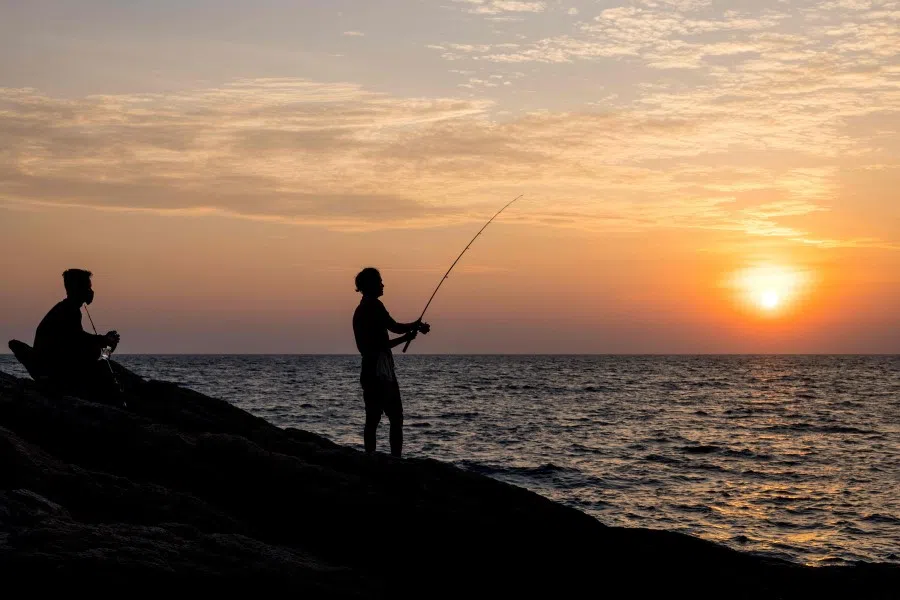
Noticeably, when situating Chiang Mai to understand Chinese tourists and residents under the second, the third, and the fourth groups who practice international education and leisure lifestyle migrations coming together with business, two particular narratives emerge on how Chinese migrants imagine Chiang Mai. Firstly, man shenghuo (慢生活), means slow life, leisure, and at ease with which Chinese people can live a simple life as they wish and not have any particular work to finish. Secondly, mai cun (迈村), narrates the characteristic of Chiang Mai as a village. Although cun, or "village", implies the lower level of modernised development of Chiang Mai compared to Chinese cities of the same scale, Chiang Mai in Chinese eyes serves as a friendly "natural environment" for safer living, and a "human environment" for more humane living.
Huai Khwang emerged as a "new Chinatown" in 2016, attracting recent Chinese migrants to reside there and form a new community.
Emerging communities
Of the multiple emerging communities in Thailand, Huai Khwang in Bangkok is most noteworthy. Unlike Sampheng-Yaowarat in Bangkok - the first "Chinatown" in Thailand that has been around since 1892 and which was built by settlers from southern China - Huai Khwang emerged as a "new Chinatown" in 2016, attracting recent Chinese migrants to reside there and form a new community. 7,000 new migrants were first identified as a new community in Huai Khwang district, near the Chinese embassy and the China Cultural Centre. Chinese travellers, especially volunteer teachers for CI and graduates of Thai universities, and Chinese residents (Chinese wives accompanying husbands who have started their own business, Chinese women married to Thai nationals, etc.) found this area convenient, being close to the Chinese embassy, having easy access to the Chinese bank, filled with authentic Chinese restaurants, logistics services, medical facilities, convenient mass transit stations, and accommodation with Chinese-speaking staff.
Gradually, many of these new migrants shifted from volunteer teaching to running small-scale commercial enterprises. In accordance with Thai Law, the Chinese usually work in collaboration with Thai counterparts to conduct trade and business in Thai goods (e.g., latex rubber pillow stores, bird's nest tonic shops, cosmetics outlets, handbag stores, crocodile skin belts). Some serve as brokers for mainland Chinese in purchasing fixed assets, such as properties and education institutes. Although both licensed and non-licensed businesses can be found in this area, it is mostly non-licensed businesses that proliferate by providing transport, logistics and warehouse services. Some tend to move to other provinces or back to China after their experiment in business activities.
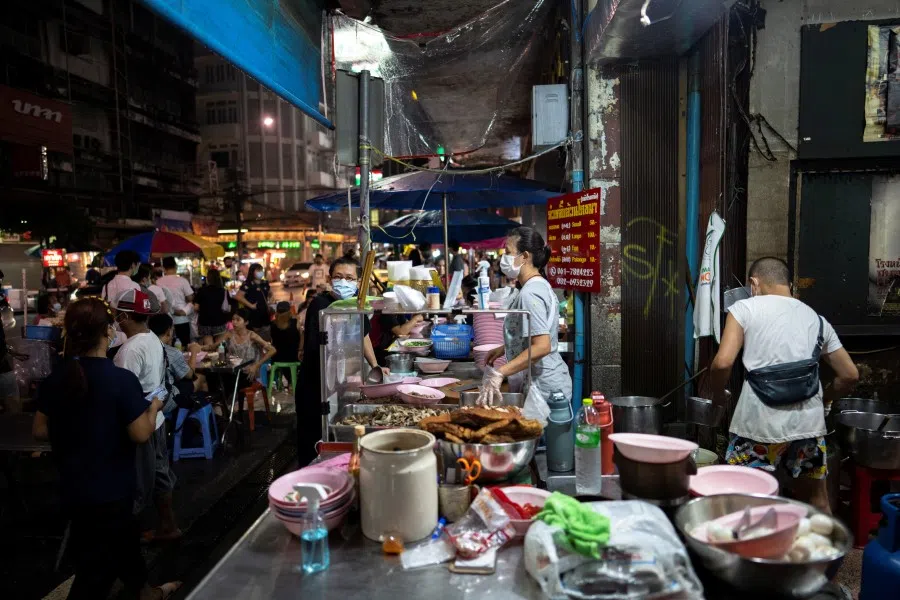
Conclusion
Xin yimin in Thailand come in four categories, based on their reasons for migration. Those who migrate for business opportunities or employment prefer Bangkok, with manufacturing being the biggest industry with major Chinese investments, compared to other industries such as banking and real estate. The second group of new migrants are those who migrate for education. Available data point to these students being mostly self-funded and their preference for private universities suggests that these migrants are financially well off. The third category relates to lifestyle migration which often begins with them coming on tour and choosing to migrate later. The fourth group comprises of those migrating for reasons relating to education or to a search for lifestyle change who go into online businesses.
It can be observed that the slower pace of life in Thailand is a great attraction. With the inflow of these types of immigrants, new communities appear. Huai Khwang in Bangkok, for example, is a notable example of this, signally the need for further studies on the phenomenon of Chinese migration to Thailand in the 21st century.
This article was first published by ISEAS - Yusof Ishak Institute as ISEAS Perspective 2021/168 "The Nature of Recent Chinese Migration to Thailand".
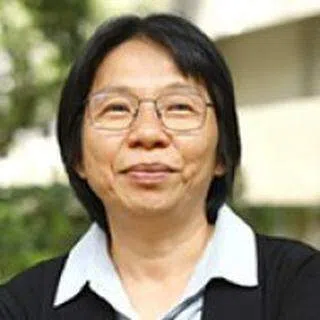



![[Big read] Love is hard to find for millions of rural Chinese men](https://cassette.sphdigital.com.sg/image/thinkchina/16fb62fbcf055b710e38d7679f82264ad682ce8b45542008afeb14d369a94399)
![[Big read] China’s 10 trillion RMB debt clean-up falls short](https://cassette.sphdigital.com.sg/image/thinkchina/d08cfc72b13782693c25f2fcbf886fa7673723efca260881e7086211b082e66c)
